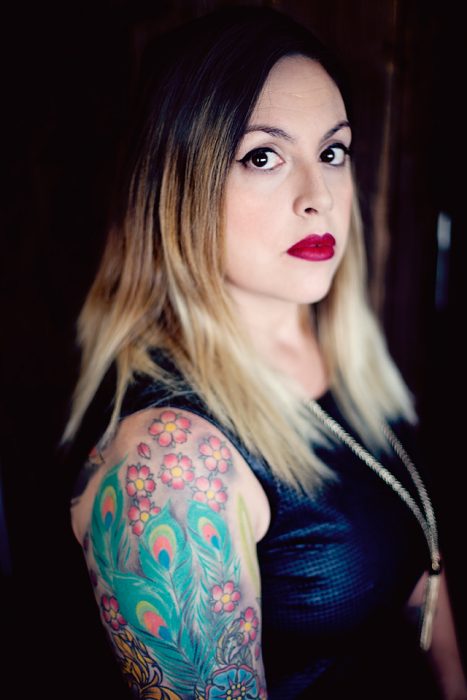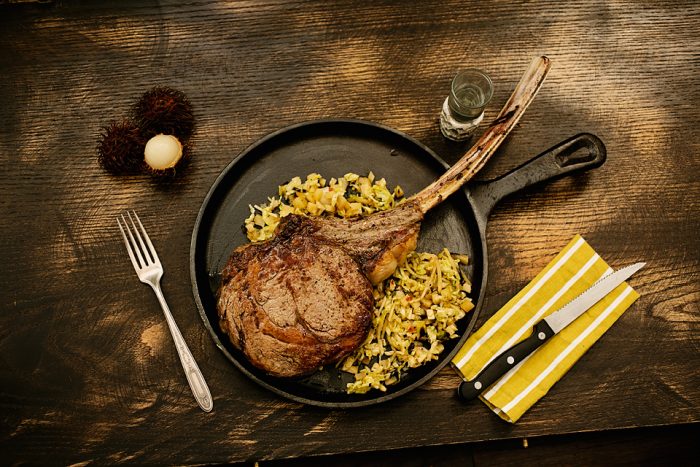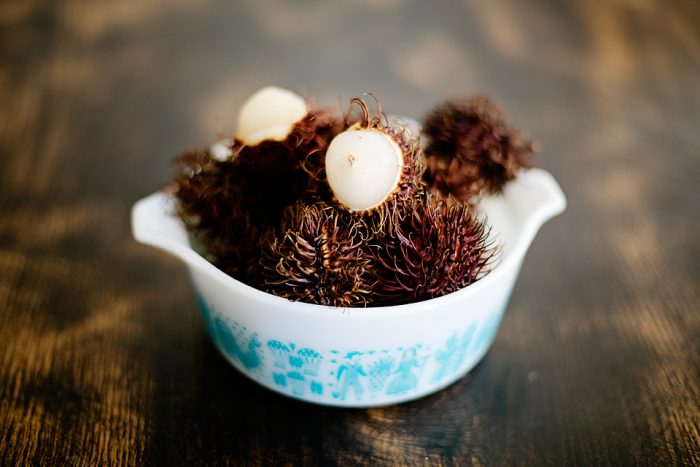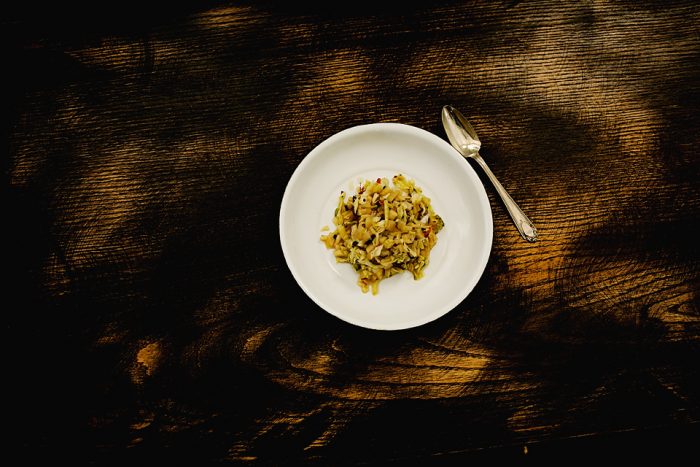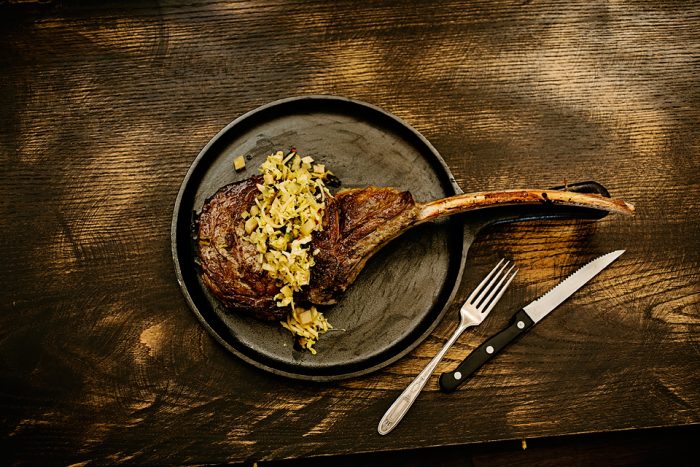Music featured on this episode performed by Mateo Kingman, Borchi, Guillermo Portabales, Steffen Kirchhoff and Rebeca.
I had a rough relationship with Craft when I was younger. I felt that the world was not sensible enough to my identity as a Mexican artist living in California. We’ve seen this play out in media and entertainment in numerous ways over the years. As an artist, I felt like I had two options: The first was to understand how to appeal to the dominant culture by finding dozens of ways to validate myself through their institutions. The second was to produce my Craft exactly as I was inspired to create it and suffer the poverty of the park bench.
As I’ve gotten older, after seven failures to penetrate the market with my artwork, I began to look around to other artists to see how they were dealing with their own Craft. Irene Pereyra’s Craft found me through Dribbble platform. Dribbble is a site dedicated to artists showcasing their artwork to other artists. I connect with it through my Flipboard app on my iPhone. I was scrolling through the tiles searching for inspiration and I stopped at an image. It was a GIF of a young Peruvian mestiza looking through a hole in the wall at a dining room table. The table was purple and the chairs were purple except for one that was hot pink. The table was fully set but there was no food on the table. I considered for a moment, before clicking on the image: What kind of nutrition would this Peruvian woman serve at this table?
I connected with Irene and she told me her story. She was born in Lima, Peru into the Shining Path conflict that claimed her parent’s marriage. At the age of five, she left with her mother to live in Amsterdam. Irene’s mother was an educator and a writer and she was having difficulty finding suitable housing in the city center for her and her daughter. In a café, she read an ad in a leftist paper searching for a mom in her forties with a five year old daughter for a housing experiment called Kollontai.
In Amsterdam, in Kollontai, everything was thought out but it didn’t play out because Life and Humans got in the way. The shared housing experiment is documented by Irene in her interactive documentary, One Shared House.
This is Irene’s Craft. Many years later, after mastering in graphic design at Pratt Institute in New York City. After working in a boutique digital production shop in Tribeca. After riding the dot com boom. After partnering with a Russian man named Anton to open their own shop called Anton and Irene. After finding a corner loft in a pencil factory in Brooklyn in the Summer of 2016. They both dedicated $20,000 to create the next generation of an interactive documentary called Clouds Over Cuba. This is One Shared House. Inspired by Irene’s experience at Kollontai. It is a showcase of their talent and their Craft.
Anton and Irene launched the project in Beta to attract survey results. They used Facebook, Twitter, Instagram and Dribbble. They got thousands of people to respond. Including me. What they didn’t know would happen was that the people that engaged in the beta, really wanted to talk about the topic of communal living or the sharing economy. They shared with the artists their very intimate stories of their own experiences. They didn’t talk about the web site or the user interaction, they got into the depth of the story without acknowledging the technical aspect of the project. It resonated with the personal lives of other people. You can tell that they put a lot of love into the project at a very big scale. It was well thought out. It was a creative project made from scratch. It was the moment when Irene realized that … “We are grown up enough in our craft to know what we want to say as artists.”
Inside this pencil factory in Brooklyn is another talented designer. Her name is Leta Sobierajski. She was raised in a rural farming community in New York. Inspired by animé and a gifted copy of Photoshop, she was educated upstate at Purchase College and then made her way into New York City. In time, she learned more than just working with computers and she went into the woodshop and metalshop and the clayshop and basically learned to work with all types of materials. She learned animation and stop-motion and motion graphics and began doing work for gigantic moneymaking clients and found that it wasn’t very fulfilling. She felt a need to develop her own personal projects in 2013. She wanted to develop her own Craft. She said to me:“Making is a part of thinking and feeling.”
So, lets consider the two ideas together: We are grown up enough in our craft to know what we want to say as artists + Making is a part of thinking and feeling. Hold on to that for me…
Natalia Iragorri is a Colombian artist living in Los Angeles. She was introduced to me by my friends at the Wonka Lab. They are producing an event in Whistler, British Columbia, on March 26 called Totem Summit. In a very crowded event space, they believe that the key to real relationships in business are built on shared experiences. So, in addition to inviting entrepreneurs like Natalia into their Dream Builder platform, they invite investors like me to connect with her over high speed bobsledding and deep country snowshoeing and black diamond downhill skiing.
Natalia did everything that was asked of her as a child. She was educated at the university level, interned at the right place and then got a job at a marquee advertising agency in Bogotá. She produced great professional work and then after getting her masters at Boston University, she decided to open up her own production studio on Long Beach. She produces omnichannel stories in a way not yet seen in our culture. For example, she’ll take a story like Little Red Riding Hood and tell you the story from the perspective of the wolf and she’ll use material from your life story, for example, your grandmother’s story, to relate the grandmother in the story to your own grandmother. Her goal in the coming years is to assist children into learning the productive side of technology as opposed to the consumer side.
For Natalia, her Craft didn’t happen in one moment. She saw some things she liked and some she didn’t like and she often got frustrated. She wanted to know how to get to true creativity instead of doing a small part at the advertising agency and simply moving from one brand to another brand. She wanted to incorporate herself to the final work. She was scared but she wanted to be empowered to be a driving part of the creative loop that was invested in the final work. She dug into her family’s story in Colombia. Her ancestors came from a city called Popayán and over Semana Santa, there was a tradition of crowdsourced storytelling to dialogue their ideologies. When I heard her tell me about the experiences, I thought to myself: Wouldn’t it be great to hear that Colombian story in virtual reality? That is not something that any of the supposed geniuses at Oculus or Vive or Magic Leap are invested in showcasing to the world but it is something that I would pay to see. I’m hoping that Natalia will create it.
We are grown up enough in our craft to know what we want to say as artists + making is a part of thinking and feeling + the ability to tell our own story. This brings us to Claudette Zepeda. My homegirl worked at four major kitchens leading up to her current focus. In the last kitchen where she worked, I want to highlight something that is little known but widely practiced. There is a vato in Baja California that is a master brander. He was featured in The New Yorker several years ago as the poster child for Tijuana and the surrounding areas. Ever since, he has achieved celebrity status for his work promoting the gastronomy of Baja to the world. When he went to open up his first restaurant in the United States, there was a lot of headline risk.
I didn’t show up on opening night but I arrived shortly thereafter. I asked to speak to the chef and I was introduced to Claudette. She made me a sope de tuetano y camarón. Homies, I’ve done the biographies of close to 75 Latin American chefs. Ive been fed properly. Of those 75, Id say 20 are truly interested in perfecting their craft. I jumped back to Irene and her purple table for One Shared House. I thought of Claudette cooking the food. She next made me a beef tomahawk with mexchi and tequila. She added fresh rambutan for dessert. She used to eat them in the thunderstorms in Guadalajara. She told me her story…
The homes in Guadalajara have an open kitchen and I remember going to the market in Tlaquepaque to bring back food to cook in this outdoor area. Since I was born in August, the torrential rain in that season was so impressive. We would cook and listen to the thunderstorms. When the rain stopped, we would eat and I would have tortillas and panela cheese. I also drank a ton of papaya because my grandmother believed that we would grow up to have strong stomachs if we ate a papaya shake daily.
We had a woman who helped around the kitchen who worked for my aunt Lorenza in her restaurant. Her name was Yuya. She helped raise us and I have many fond memories of being with her. Yuya made me my favorite noodle soup. I make this soup for my daughter and it reminds me of Yuya and its my daughter’s favorite. I used to get involved in all the family affairs, just following everybody around and helping where I could. I wanted to be around them and involved in everything. I remember vividly that I would cut the radishes for the weekend pozole.
When I was eighteen, I was a rebel and my parents were threatening to send me back to Guadalajara to a private school. At this time, I was living in Imperial Beach which is the most southern town at the Mexican border. I had a lot of problems with my parents and I left home at the age of seventeen. I graduated from high school and I got pregnant with my first child, a boy, his name is James but we call him, Jaime José. My father is a lawyer and since I was very young, it was expected that I would follow in his footsteps. At a young age, I would write contracts that were tied back to my behavior. It was like they were training me to be a litigator but that didn’t happen after I left home and had my baby. The world ended for my family.
I got an apartment in Imperial Beach and I began to work to support my baby and me. I worked in telemarketing, as a receptionist, whatever I could find. Meanwhile, at home, I started watching the food network which was really popular at the time. I was completely estranged from my father and my boy’s father but one thing led to another and at twenty-one, I was pregnant with my baby girl. I still wasn’t getting any additional financial support so now, I had to work to support three people in my apartment. It wasn’t a very healthy environment.
A few years later, I wanted to finalize my education, so I considered going to learn the culinary arts but quickly I recognized that a degree wasn’t going to help me get a great job in San Diego. What was more important was finding a mentor that believed in me so I set out to find a mentor with a solid reputation. Marcela Valladolid was a great inspiration on TV and I liked the energy of restaurants. I became a hostess, a waitress, a dishwasher, a pastry chef, a butcher … I did it all. I liked the highs and lows. I wanted to get to Marcela’s level but I didn’t want the glamorous life, I just wanted to become a respected chef.
I found my first mentor, Jack Fisher, at Jack’s in La Jolla, and I became the lead pastry cook within three months. I watched and I learned and in-time, I received my first referral to join the kitchen at El Bizcocho. It was a forty five minute commute from Imperial Beach to a haute French kitchen in Rancho Bernardo but I did it. I was so eager to learn and I wanted to keep getting better at my job. When they tried to promote me, I told them that I wasn’t ready but the chef convinced me that I was. He was super accomplished and I followed him around everywhere until he went to New York to work for Daniel Boulud. After the chef left, I couldn’t find the same inspiration at El Bizcocho.
I lost the passion and I left the kitchen for two years. I went to Africa and worked with nonprofits. I did administrative work. I did whatever I could and when I reached my limit, Jack Fisher called me to refer me to Jsix in downtown San Diego. The chef was very unique and he wanted to do everything in-house and I learned first how to make artisanal bread and then I learned to butcher a pig. I learned the art of nose to tail. I worked at Jsix for three years and was very happy because I transitioned from cooking sweet to cooking savory.
Around May 2015, I kept seeing my homeboy Chad White with this Mexican dude named Javier Plascencia. One night, they hosted a dinner with Doña Esthela in Valle de Guadalupe so I tagged along and Amiko Gubbins introduced me to Javier and she told Javier to hire me. Javier told me to call him. I persisted with Javier for quite some time and eventually, he did hire me. There was a lot of pressure to open Javier’s first American restaurant but we did it successfully and I had the role of Chef de Cuisine and kitchen manager of thirty five workers in the kitchen at Bracero Cocina de Raiz in Little Italy, San Diego.
Three years ago, I married an American marine via eHarmony. It was a great fit but it was a complicated relationship. He was deployed twice during our relationship to Afghanistan and Jordan. But, I too was deployed through my work to open a kitchen in Chicago. I had an on-call relationship with Javier and if Javier called me at midnight to do work, I drop my plans and go to work. It’s hard for people to understand that level of dedication but a marine is capable of understanding because they live the same life in that type of dedication to service. My husband and I are very patient and understanding of each other.
I spend most of my time now trying out new ideas for my own brand, Ixcuintla, but I am also a mother and being a mother is very hard. It is also very fruitful. Being a mother is very similar to being in a busy kitchen. Its a demanding effort that requires a lot of emotion but it is well worth it.
The Intelatin monthly podcast is produced by Sergio C. Muñoz. We are in our sixth year of production showcasing the contributions of Latin American individuals in the United States. The work of Intelatin has been featured in Studio 360, ReVista—The Harvard Review of Latin America, LACMA, Los Angeles Times, LA Weekly, Art Center College of Design, Poder Hispanic Magazine, Latino Leaders Magazine, PBS, the Inter American Dialogue, America’s Quarterly and over a dozen publications in Latin America. Special thanks to Latino Rebels for their support. The photography for this feature was shot by Cintia Soto for Intelatin. Please connect with the project at MXCNAS.com. The hashtag for this project is #MXCNAS.



